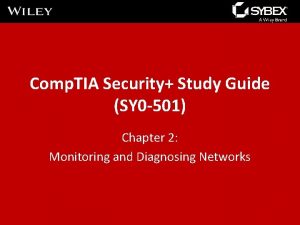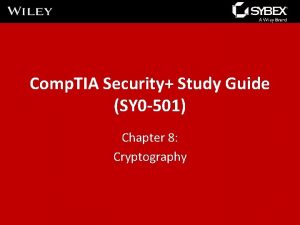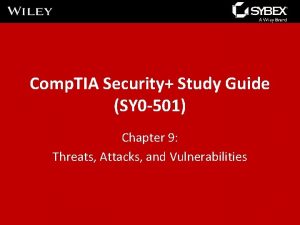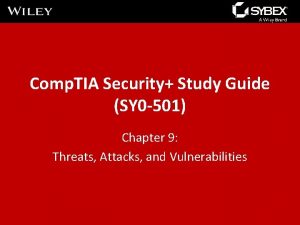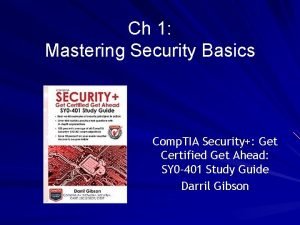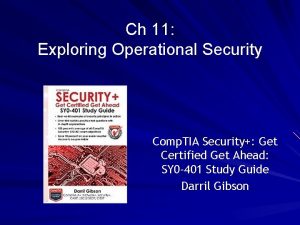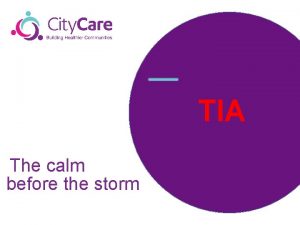Comp TIA Security Study Guide SY 0 501













- Slides: 13

Comp. TIA Security+ Study Guide (SY 0 -501) Chapter 3: Understanding Devices and Infrastructure

Chapter 3: Understanding Devices and Infrastructure • Install and configure network components, both hardware- and software-based to support organizational security

Designing with Security in Mind • Firewalls • VPNs and VPN concentrators • Intrusion detection systems

Intrusion Detection Systems

Intrusion Detection Systems • An intrusion detection system (IDS) is software that runs on either individual workstations or network devices to monitor and track network activity. • Intrusion detection systems (IDSs) are becoming integral parts of network monitoring. • Intrusion detection (ID) is the process of monitoring events in a system or network to determine whether an intrusion is occurring • An intrusion is defined as any activity or action that attempts to undermine or compromise the confidentiality, integrity, or availability of resources.

Chapter 3: Protecting Networks • IDSs use four primary approaches – Behavior-based detection – Signature-based detection, also commonly known as misuse-detection IDS (MD-IDS) – Anomaly-detection IDS – Heuristic IDS

Network-Based IDS

Using a Hub to Attach NIDS to the Network

Implementing a Passive Response Passive response : The most common type of response to many intrusions. In general, passive responses are the easiest to develop and implement. Some passive response strategies • Logging • Notification • Shunning

Implementing an Active Response • Active response – Involves taking an action based on an attack or threat • An active response will include one of these reactions: – Terminating processes or sessions – Network configuration changes – Deception

Host-Based IDs • A host-based IDS (HIDS) is designed to run as software on a host computer system. • HIDSs are popular on servers that use encrypted channels or channels to other servers.

Chapter 3: Protecting Networks • Network Intrusion Prevention Systems (NIPSs) focus on prevention. These systems focus on signature matches and then take a course of action.

• • • • Security-Related Devices Router Switch Proxy Load balancer Access point SIEM DLP NAC Mail gateway Bridge SSL/TLS accelerators SSL decryptors Media gateway














